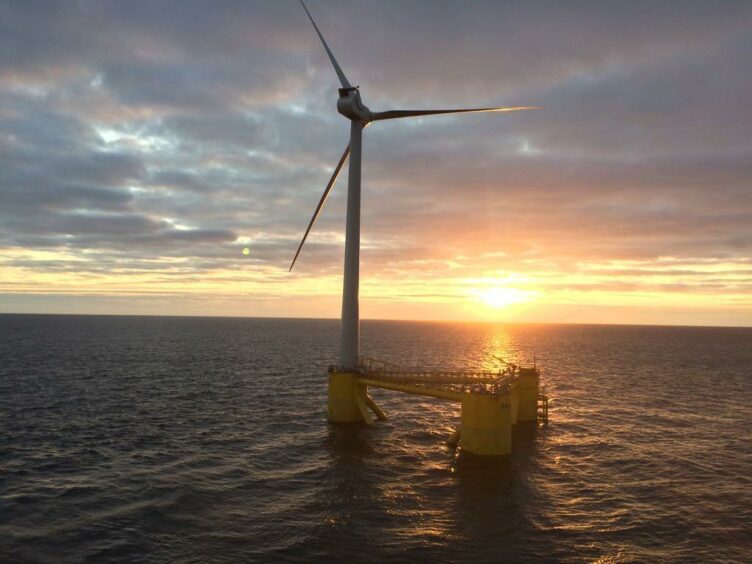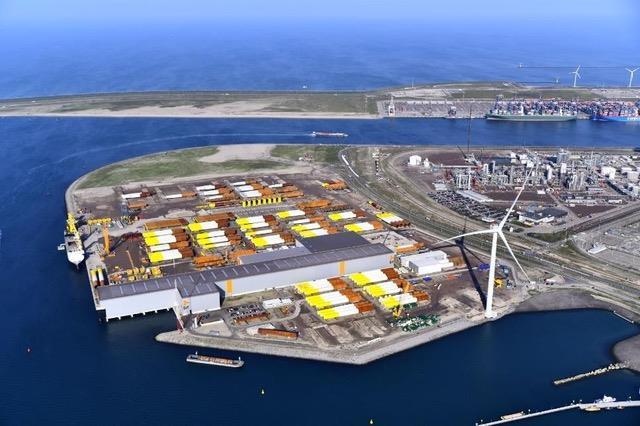
Floating wind faces the same structural headwinds as other sectors but investors still have plenty of appetite to commit capital, a key event in Aberdeen heard.
Introducing a panel discussion on how the floating sector can garner investment, Scottish Renewables director of policy Morag Watson noted: “There’s a track record for fixed bottom offshore wind – that breeds confidence.
“Floating offshore wind is an emerging thing and we’re learning as we go along. We’re building things out that have never been done before, and there is a degree of uncertainty in that.
“And uncertainty and investor confidence are not always happy bedfellows, so this is the terrain we need to navigate through.”
Clement Weber, managing director at Green Giraffe Advisory affirmed that the UK is “the most developed market in the world” for offshore wind, apart from China – a status that should make it easier to adopt and de-risk floating wind.
He contrasted this to other nations which he said would have to likely leapfrog fixed-bottom wind and go straight to building floating capacity and supply chains, adding risk to potential investors.
Other panellists, including ICP Infrastructure technical director Magnus Christian Ebbesen agreed the UK offered “one of the best” markets in Europe and the world for the segment, yet also noted in his remarks a growing desire for realism as to what can be delivered and when.
Mr Ebbesen showed that while the floating wind development pipeline grows every year – buoyed considerably by the likes of ScotWind and INTOG – the volume of operational projects has become narrower as developers either adopt more pragmatic timelines or are forced to delay.
This can be seen in the likes of Equinor’s HyWind Tampen scheme – now the largest such project in the world – where COVID-19 and other delays pushed completion to this summer after a lengthy development phase, or the UK’s Erebus scheme off Wales.
Key challenges
Mr Weber identified several “challenges” facing the market at present, and affecting its access to investment.
“The first is the cost of capital…what we have put in our financial models in terms of why the LCOE [levelized cost of energy] is higher than 12 months ago is because the +4% increase in the cost of capital has an impact that is even bigger than the increased capex and cost of construction,” he said.
The latter two points combined have “a very big impact on the LCOE of the sector” though these act in the same way across both the fixed and floating segments.
For that reason, he suggested the transition to floating “will happen” but “won’t follow the line we initially thought” just a year or two ago.
He pointed to supply chain as the second main challenge, and the availability of sufficient capacity to deliver on the sector’s ambitions.
“If we look at the capacity that the supply chain can currently deliver – especially in the floating wind sector – and the projects under development, what can actually be bult is lower than all the projects currently under development,” he continued.
“For us as financiers it’s really important to keep that in mind because unlocking the sector finance gap also means making sure the funding flows to the supply chain and innovation.”
Mr Weber pointed to a newly opened Sif monopile factory where the manufacturer has doubled capacity, but is already booked solid to serve the Dutch market alone for the next years.
“We do need more capacity – even with all the projects that have been cancelled and delayed we are still far above what we can deliver in terms of capacity and a lot of this requires investment,” he added.
His final point was the wider challenge of a drying up of capital markets, though he suggested the importance and appetite for energy transition meant clean energy had been “relatively protected” compared with many other sectors.
“The industry here, it’s becoming more difficult and the development premium is going down, but there is still a huge appetite from banks from investors to enter the sector,” he added, noting that this was still visible in fixed and floating wind, despite recent upsets around auctions.
“Obviously the result we saw in the 2023 CfD raises the question on whether indeed we’ll have long-term projects every year, and what the size of that will be,” he said, pointing again to the issue of certainty being crucial to investing not only in projects themselves, but the aforementioned supply chain capacity.
Nevertheless, he assured attendees that in his view: “What we see is for the right projects – and it will need to be very well structured with the right mitigation of risks – there will still be funding from the debt and equity side to be able to finance the sector.”
Recommended for you

 © Andrew Dykes/DCT Media
© Andrew Dykes/DCT Media © Supplied by Sif Offshore Foundat
© Supplied by Sif Offshore Foundat